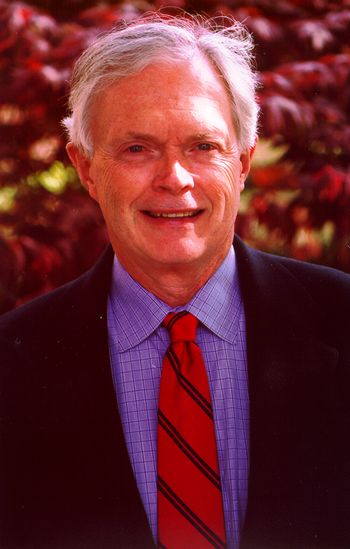Diabetes Center to be primary focus for Granner

Dr. Daryl Granner
The Chinese symbol for crisis consists of two characters ‹ one representing danger, the other opportunity.
This symbol, and the meaning behind it, has taken on special significance for Dr. Daryl K. Granner, Joe C. Davis Professor of Biomedical Sciences and chair of Molecular Physiology and Biophysics.
A copy of the symbol sits on his desk as a reminder that, sometimes, what is perceived by many to be an obstacle to success is actually an opportunity take a new approach, try new things and forge a fresh path to continue the journey. That has been Granner's philosophy since his arrival at Vanderbilt University Medical Center 14 years ago. Since then, periods of both opportunity and obstacle have led to success and growth of various VUMC programs.
Under his guidance, the Department of Molecular Physiology and Biophysics has climbed steadily upward, rising to the top of such departments nationwide in attracting research funding from the National Institutes of Health.
In his early years at VUMC, Granner was asked to assume the directorship of the Medical Scientist Training Program and played a central role in the extensive renovation of this important and now well-recognized program.
In recent years, Granner has been instrumental in the formation of the comprehensive Vanderbilt Diabetes Center, which is devoted to training diabetes researchers, treating patients, and investigating causes and possible cures for the disease, which affects 16 million people in the United States alone.
For the past several years, though, Granner has been serving triple duty as an active researcher, department chair and director of the Vanderbilt Diabetes Center. So, after his many years of leadership, he is stepping down as chair of Molecular Physiology and Biophysics in order to focus full-time developing the strengths of the Vanderbilt Diabetes Center and in pursuing his personal research program.
"The Diabetes Center is a complex entity and it has reached a point where it needs more hands-on guidance," Granner said. "Stepping down from the chair of the department of Molecular Physiology and Biophysics will allow me to finish putting the Diabetes Center together and make sure that it is working properly."
The move is an important one and will strengthen the institution by fostering that rarest of opportunities; the right person in the right place at the right time.
"Daryl Granner is one of the people who have helped build the stature and reputation of this medical center," said Dr. Harry R. Jacobson, vice chancellor for Health Affairs. "His leadership in the Diabetes Center has already gained international recognition, which will only increase as he is able to devote more time to it."
Since 1984, when Granner was appointed chair, Molecular Physiology and Biophysics has risen to become the top-ranked department in the nation in terms of attracting NIH funding, a feat Granner attributes to the quality and hard work of its investigators and their research groups.
"You don¹t get to be a number one department in the nation without bright people and great scientific prowess," said Granner.
"And I am most happy that we have achieved this success while maintaining outstanding collegial behavior among our faculty. Our department is known for its generosity in participating in major medical school and university projects, and I think that has been key to our growth as individuals and as a department."
"We have established a culture of working to improve the school, and that type of cooperation has become a model for departments here and all over the nation," he said.
It is this type of cooperation that Granner expects will continue in the Diabetes Center.
"In many ways the Diabetes Center is like a sports team whose players keep changing over the years. The challenge is to stay ahead of the rest while having a constantly changing faculty team," said Granner.
The key components of the center comprise several different aspects of diabetes research, including training programs and a drug development partnership.
The centerpiece program is the NIH-sponsored Diabetes Research and Training Center. Established in 1973, the DRTC is the oldest, and one of the most respected, of the NIH centers.
The second consists of three NIH-sponsored training projects: a summer program that trains medical students for diabetes research; a molecular endocrinology training program for pre- and post-doctoral Ph.D. students; and a training program for MDs who want to do research in diabetes.
A third component of the Diabetes Center is the Juvenile Diabetes Foundation-Veterans Administration Research Center, directed by Dr. Steven N. Davis, associate professor of Medicine. The Veterans Administration Research Center is one of the only such centers in the U.S.
The center's Clinical Care program, organized by Dr. Alan L. Graber, clinical professor of Medicine, is the fourth component of the center and will be the most comprehensive diabetes care program in the region, Granner said.
The last of these components consists of a recently formed alliance with OSI Pharmaceuticals, Inc., to develop new drugs for the treatment of diabetes.
"The alliance provides for a complete drug discovery and early development infrastructure, thereby enabling the program to conduct all the necessary research and development activities to move rapidly from identification of disease targets to the testing of drug candidates in phase II clinical trials," said Granner.













